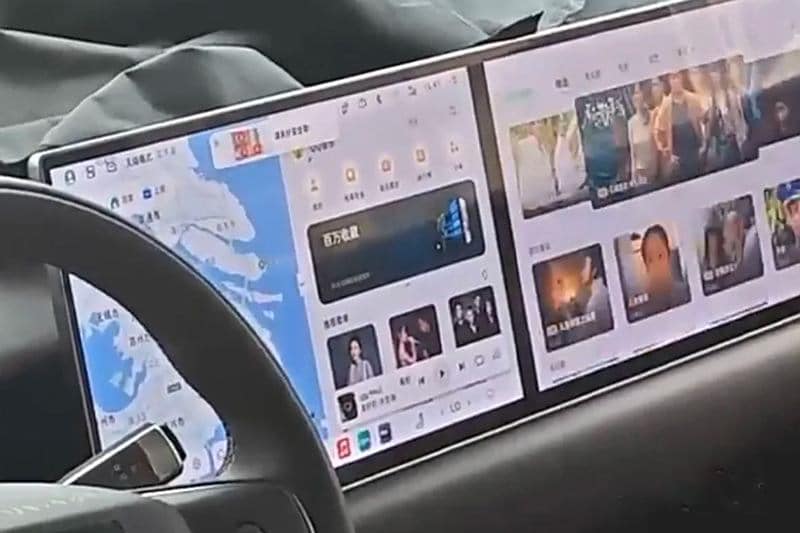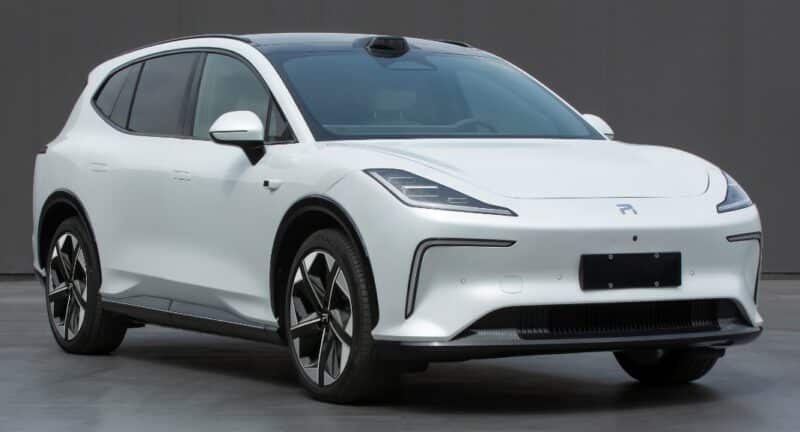Rising RC7 interior spied and the new SAIC EV could be exported as an MG
Rising is one of the many SAIC brands which seem little different from one another and it was initially just known as R. The first car the R ER6 was a fully electric version of the Roewe ei6. Word earlier this year was that SAIC was about to drop the brand. However, the listing of the new Rising RC7 last month by MIIT and now the spy shots of the interior suggest all might not be lost for the brand.
Given the similar size between the RC7 and the exiting Rising R7 it was thought that they might be closely related. However, rather than a fastback shape the RC7 has a squared out back. There is though a definite family resemblance between the two cars. Regarding the RC7 name the R stands for Rising while the C is apparently Cosy and the 7 is the product positioning.
Where the RC7 differs significantly from its R7 sibling is with the interior which is very much a departure from current Rising models. The overall setup in the RC7 is quite similar to that of Li Auto models. There is a dual screen setup for the center infotainment unit and the adjoining passenger entertainment screen. Although not very apparent from the pictures Autohome reports that there is still a slender LCD instrument panel behind the steering wheel rather than abandoning this in favor of a HUD as in the Li cars.



While the screen setup is very different the steering wheel is carried over from existing models. A three-spoke design it has two tracker ball-type controllers and two buttons under each. Going hand in hand with the redistribution of screen space the design of air conditioning vents and other elements of the dashboard have changed.
Externally the car has quite a simple design. At the front there are two clearly defined separate light clusters while at the back there is a through light bar design. The car has concealed door handles and mounted on top of the windshield is a Lidar unit.

The Rising RC7 measures in at 4860, 1920 and 1660 mm (l/w/h) and the wheelbase is 2935 mm. Ministry of Industry and Information Technology (MIIT) listing information consisted of four different entries for the RC7. Three were for straight BEV versions while the other was for a battery-swappable version. Curb weights range between 1990 and 2065 kg.

All versions use the same TZ204XS1351 150 kW electric motor. According to version some use lithium iron phosphate batteries while others use ternary lithium. Those that use lithium iron phosphate batteries have a top speed of 196 km/h while those with the ternary batteries top out at 200 km/h. All batteries are produced by the SAIC CATL joint venture factory. Lower spec versions of the Rising RC7 do not come with Lidar.

Earlier this year at the Geneva show SAIC showed two Rising models, the F7 and R7 rebranded as the MG 9 liftback and the MG S9 fastback SUV respectively. It is possible that the RC7 will undergo a similar treatment and be exported as an MG. However, a launch in Europe given that SAIC now attracts a 38.1% tariff for EVs is less likely. The car is likely to go on sale in China in the third quarter with prices starting around 200,000 yuan (27,500 USD).
Source: Autohome, MIIT



